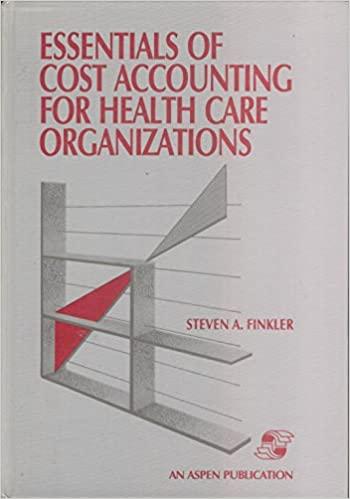Question
You are the new accounting manager at the Barry Transport Company. Your CFO has asked you to provide input on the company's income tax position
You are the new accounting manager at the Barry Transport Company. Your CFO has asked you to provide input on the company's income tax position based on the following:
- Pretax accounting income was $48 million and taxable income was $14 million for the year ended December 31, 2018.
- The difference was due to three items:
- Tax depreciation exceeds book depreciation by $30 million in 2018 for the business complex acquired that year. This amount is scheduled to be $60 million in 2019 and to reverse as ($60 million) and ($30 million) in 2020, and 2021, respectively.
- Insurance of $8 million was paid in 2018 for 2019 coverage.
- A $4 million loss contingency was accrued in 2018, to be paid in 2020.
- No temporary differences existed at the beginning of 2018.
- The tax rate is 40%.
Required: 1. Determine the amounts necessary to record income taxes for 2018 and prepare the appropriate journal entry. 2. Assume the enacted federal income tax law specifies that the tax rate will change from 40% to 35% in 2020. When scheduling the reversal of the depreciation difference, you were uncertain as to how to deal with the fact that the difference will continue to originate in 2019 before reversing the next two years. Upon consulting PricewaterhouseCoopers' Comperio database, you found: .441 Depreciable and amortizable assets Only the reversals of the temporary difference at the balance sheet date would be scheduled. Future originations are not considered in determining the reversal pattern of temporary differences for depreciable assets. FAS 109 [FASB ASC 740Income Taxes] is silent as to how the balance sheet date temporary differences are deemed to reverse, but the FIFO pattern is intended. You interpret that to mean that, when future taxable amounts are being scheduled, and a portion of a temporary difference has yet to originate, only the reversals of the temporary difference at the balance sheet date can be scheduled and multiplied by the tax rate that will be in effect when the difference reverses. Future originations (like the depreciation difference the second year) are not considered when determining the timing of the reversal. For the existing temporary difference, it is assumed that the difference will reverse the first year the difference begins reversing. Determine the amounts necessary to record income taxes for 2018 and prepare the appropriate journal entry.
Step by Step Solution
There are 3 Steps involved in it
Step: 1

Get Instant Access to Expert-Tailored Solutions
See step-by-step solutions with expert insights and AI powered tools for academic success
Step: 2

Step: 3

Ace Your Homework with AI
Get the answers you need in no time with our AI-driven, step-by-step assistance
Get Started


